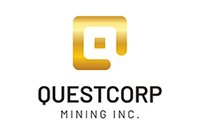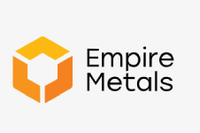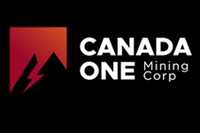
Here’s a breakdown of what Europe’s green agenda could mean for copper, whether the region can meet its own supply needs and what analysts say about the challenges ahead.
The essential role of copper in economies around the world is well known, but as governments continue to shift toward green energy, what could be in store in the long term for the metal?
As the world moves away from fossil fuels, battery metals such as lithium and cobalt are getting attention for the essential roles they play in electric vehicle (EV) batteries. But copper also has a prominent place in the green energy future.
Europe in particular has pledged to be climate neutral by 2050, with electrification of transportation at the center of its plans to make this goal a reality.
Here the Investing News Network (INN) gives a breakdown of what Europe’s green agenda could mean for copper, whether the region can meet its own supply needs and what challenges analysts see ahead.
Copper for Europe’s plans
The EU has set an ambitious green agenda for the next decades, including becoming carbon neutral by 2050. To reach these goals, mining is essential, and metals such as copper will be key.
A well-known base metal for most investors, copper is used primarily in construction due to its conductivity. In fact, according to the International Copper Study Group (ICSG), more than 40 percent of all copper production ends in this sector.
However, as governments push forward with the electrification of transportation and the use of energy storage as ways to reduce carbon emissions, copper uptake in this segment is expected to surge.
When looking at the plans outlined for electrification in particular, there are three main areas where copper is needed: in the production of EVs, in charging stations and in energy storage.
In 2020, Europe became the leading region for EV sales, with a total of about 2 million sold despite the uncertainty brought by the coronavirus pandemic. The outlook for 2021 remains bright for the sector, and most analysts agree the uptick in demand is set to continue.
According to Wood Mackenzie, EVs can use up to three and a half times as much copper when compared to internal combustion engine (ICE) passenger cars, while a fully electric bus could use between 11 and 16 times more copper than an ICE passenger vehicle, depending on the size of the battery and the bus.
The amount of copper needed in Europe to meet future EV demand will depend on what type of EVs are taken up by consumers. Different vehicles, such as battery electric vehicles (BEVs), hybrid electric vehicles (HEVs) and plug-in hybrid electric vehicles (PHEVs), have different intensities, Eleni Joannides of Wood Mackenzie explained to INN.
According to the research firm, ICE vehicles use approximately 22 kilograms of copper, while HEVs use 40 kilograms, PHEVs use 55 kilograms, BEVs use 80 kilograms and battery electric buses use 253 kilograms.
Aside from that, copper use is not only limited to EVs — as mentioned, the metal is also needed in EV charging stations and infrastructure.
Looking at some numbers on infrastructure, by the end of 2020, there were a total of roughly 285,000 public charging outlets in Europe serving a fleet of around 3 million plug-in electric cars. That’s close to one charging outlet per 10 electric vehicles, which is the optimum level that the European Commission recommends, Luke Gear, senior technology analyst at IDTechEx, told INN.
“Up to 90 percent of EV owners in Europe also have access to private charging,” he said. “As the EV market matures, there will be more reliance on public charging as more lower-income households without home charging options become EV customers in the coming decade.”
IDTechEx predicts that a total of 1.7 million public outlets will come available by 2031 in Europe, with copper expected to remain an essential material for cabling and power electronics over the period.
“We don’t see copper being displaced in cabling and power electronics in the foreseeable future,” IDTechEx’s Gear said. “Moving to higher voltages and wide-bandgap semiconductors in DC fast charging will enable downsizing of overall packages and cabling, which would reduce the amount of copper used per charger, but copper will still be required.”
Speaking about the challenges Europe will face in upscaling its EV infrastructure, Gear said universal compatibility and common standards would benefit all.
Trying to calculate and forecast the amount of copper needed for charging stations can be a difficult task, Jonathan Barnes, principal consultant for copper at Roskill, told INN. That’s because there are multiple factors at play, including if copper will be the metal of choice in Europe instead of aluminum.
“Overall it’s going to be positive for copper,” Barnes added.
Copper will also be needed in energy storage, which is thought to be the most copper-intensive component in the electromobility spectrum. Forecasts show that for every kilowatt hour of a lithium-ion battery, 1.1 to 1.2 kilograms of copper are used.
Copper supply chains in Europe
The geopolitical developments of the past few years have led to many questions about supply chains for critical minerals and how to make them more secure and efficient, with localization and regionalization at the center of the discussion.
Copper is not listed as a critical mineral in the EU, but as EV demand increases, it is interesting to see the steps the region is taking to further strengthen its supply chain.
According to the ICSG, Europe currently consumes around 4 million tonnes of copper. To meet that demand, it uses four sources: it mines 20 percent of its total supply of copper, with another 43 percent coming from scrap from within the EU. The rest comes from net imports of metal from other regions (12 percent), and imports of ores and concentrates (25 percent).
“Although Europe produces less refined copper than it consumes and as such is a net importer of refined copper, the region as a whole is a net exporter from a copper semis perspective — complementing the refined copper with direct use of scrap,” Joannides said. “The decision to meet its demand locally will depend very much on whether the manufacturing landscape sits within the region or whether the region relies on imports of end products.”
In terms of refined copper, according to Refinitiv data, the region consumes around 3 million tonnes in total, in general around half a million tonnes more than it produces. In terms of mine supply the gap is far greater, with output below 1 million tonnes.
“At present, we see little opportunity for significant mine production growth in this region over the next decade as some mines are depleting in countries such as Spain and Finland,” Karen Norton of Refinitiv told INN. In Europe more broadly, Russia is the largest source of growth outside the EU, with the Udokan mine set to come on stream in 2022/2023.
“But much of any additional mined material is likely to be sent to China, with the possibility of a portion perhaps being processed domestically, albeit on a relatively limited scale,” she added.
Similarly, Roskill’s Barnes said there are opportunities for increased production of copper within Europe, but the majority of those opportunities are focused on either new primary production in Russia from some upcoming mining projects, or increased secondary production elsewhere.
For Norton, in terms of its own supply, Europe is probably going to struggle to compete on costs with many other regions.
“Concentrates to a large extent would have to be imported to enable significant primary metal production, and global mine supply growth is unlikely to be stellar,” she said.
Sustainability in copper’s supply chain is another factor to consider, as emission regulations will get tighter and tighter in the future.
“If you’re operating a copper smelter, you’re going to have to be spending more and more money to reduce emissions,” Barnes said, adding that a lot of the smelters are already best in class in the world. “So that’s very unlikely to be a problem in Western Europe. However, the further you go into Eastern Europe, particularly in Russia, environmental considerations are not so high on the list.”
Looking at smelter/refinery capacity into 2024, Refinitiv does not see any sizeable expansions on the horizon in the EU and Europe more generally in that timeframe.
As it stands, given Chinese measures already taken to improve environmental standards, and the country’s accelerated push to a green, low-carbon circular economy, Norton is expecting China, and the countries that form part of the One Belt One Road initiative, to remain dominant in the production of copper metal and the supply of copper products to the rest of the world.
“In all likelihood, the bulk of new capacity additions over this period will continue to be made in China, which accounts for around half of global output,” Norton said. “Beyond that there may be potential for some growth in European capacity as the circular economy and move to increased recycling is likely to gain further traction.”
Recycling is an area worth paying attention to as Europe is a key player, with nearly 50 percent of its copper demand through the recovery and recycling of value chain offcuts, plus end-of-life products, according to the European Copper Institute.
“Scrap is going to have to be more important and certainly (there is) probably going to need to be more legislation put in place,” Barnes said, explaining that the traditional route to supplying the raw material for the foil in batteries is high-grade scrap.
If the circular economy concept is thought about and put in place correctly, it could be “tremendously positive,” Barnes added. “The more we can recover, the less we need to mine,” he said. “The challenges for mining are insurmountable — as I look at it going a decade out, can we find enough new mines? If we haven’t discovered them now, it’s too late, we won’t be able to develop them, so recycling is going to have to be a large part of the answer.”
But, according to Norton, scrap supplies other than those created domestically, including e-waste, are most likely to be attracted to Asia rather than Europe.
“The region may well struggle to secure its needs for copper and other raw materials needed for the transition to carbon neutrality, and policy makers may need to act soon,” she added.
Don’t forget to follow us @INN_Resource for real-time news updates!
Securities Disclosure: I, Priscila Barrera, hold no direct investment interest in any company mentioned in this article.
Editorial Disclosure: The Investing News Network does not guarantee the accuracy or thoroughness of the information reported in the interviews it conducts. The opinions expressed in these interviews do not reflect the opinions of the Investing News Network and do not constitute investment advice. All readers are encouraged to perform their own due diligence.




